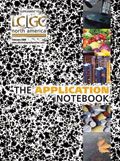Melamine and Cyanuric Acid Detection in 5 Min Using LC–MS
The Application Notebook
Since September 2008, 294,000 infants and young children suffered urinary problems due to the contamination of melamine in infant milk powder and were hospitalized. This hospitalization was required to treat the symptoms caused by the ingestion of melamine contaminated infant formula and related dairy products. Previously in 2007, pet food, animal feed, wheat gluten, and other protein-based foods were found to contain residues of melamine and its degradation product cyanuric acid (2).
Since September 2008, 294,000 infants and young children suffered urinary problems due to the contamination of melamine in infant milk powder and were hospitalized. This hospitalization was required to treat the symptoms caused by the ingestion of melamine contaminated infant formula and related dairy products. Previously in 2007, pet food, animal feed, wheat gluten, and other protein-based foods were found to contain residues of melamine and its degradation product cyanuric acid (2).
There is a requirement for a fast and accurate LC–MS-MS method capable of detecting melamine in various matrixes at concentrations determined by food authorities. For example, the Food and Drug Administration has set a limit of 1 ppm for melamine in infant formula and 2.5 ppm for other foods. There have been many methods developed for the determination of melamine and cyanuric acid residues in infant formula and meat products. LC–MS-MS methods are superior to GC–MS methods in that they have an easy sample preparation and do not require sample derivatisation. The high-capacity ion-trap mass spectrometer (HCTultra) is a highly robust system capable of operating in full scan, MSn and MRM modes. The option to use the full scan mode aids in the identification of unknown compounds with sensitivity superior compared with triple-quadrupole mass spectrometer technology. The HCTultra has a compact footprint in addition to advanced ease of operation, including manual optimisation of MRM parameters. Here we report a recently developed method for the extraction, detection, and quantitation of melamine and cyanuric acid residues using high-capacity ion-trap (HCTultra) mass spectrometry in association with the Acclaim Mixed-Mode WAX-1 column from Dionex.
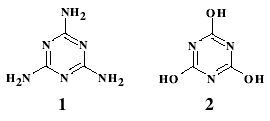
Experimental Conditions and Settings
All organic solvents were HPLC grade purchased from Honeywell Burdick and Jackson (Morristown, NJ). Melamine and cyanuric acid standards were purchased from Sigma Aldrich (St. Louis, MO). 18 MΩ water was obtained from a Milli-Q™ (Millipore corporation, Billerica, MA) purification system.
Instuments Employed
HCTultra, Bruker Daltonics
UltiMate 3000, Dionex
Calibration Standards
Standards were prepared from a stock solution of melamine (1 mg/mL) and cyanuric acid (1 mg/mL) with serial dilutions performed to prepare standards from 0.1 to 1000 ng/mL. Stock solutions were made in methanol:water (1:1), whilst serial dilutions were made in acetonitrile:water (1:4).
Sample Preparation
Infant milk power was extracted in water:acetonitrile (1:4) by sonication (30 min). The resulting extract was centrifuged at 10,000 rpm for 10 min, followed by the supernatant being removed and recentriduged at 12,000 rpm for 15 min. The resulting extract was diluted as required for HPLC analysis. Spiked samples were prepared in the same manner with melamine and cyanuric acid added prior to extraction at the required concentration.

Table I: HPLC gradient
Chromatographic conditions
Chromatographic separations were carried out using a Dionex UltiMate 3000 using an Acclaim Mixed-Mode WAX-1 (Dionex, Sunnyvale, CA) column (2.1 × 150 mm, 5 μm) maintained at 30 °C. For the simultaneous detection of melamine and cyanuric acid the mobile phase consisted of water / 0.1% formic acid (A) and acetonitrile (B) gradient at a flow rate of 300 μL/min (Table I). 10 μL injections of each standard and sample were made.
Full Scan Mass Spectrometer Parameters
A high-capacity ion trap LC/MSn system (HCTultra) from Bruker Daltonik GmbH (Bremen, Germany) was equipped with the standard ESI ion source. Full scan data was acquired in UltraScan mode between m/z 50–200, in positive mode for melamine, and negative mode for cyanuric acid, and with a fixed accumulation time of 20ms. The use of run-time segments facilitated the polarity swapping.
Experimental Results
Full Scan Results
It is possible to detect both melamine and cyanuric acid in full scan mode in under 5 min (Figure 1).
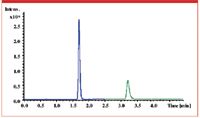
Figure 1 Less than 5 min for the detection of melamine and cyanuric acid.
MRM Results (Standards)
A calibrations curve ranging from 1 to 1000ppb is shown for melamine in Figure 2. The limit of detection was found to be 0.05 ppb which resulted in a signal to noise of 50:1 (Figure 3). Melamine was spiked into infant milk formula (1 ppm and 2.5 ppm) and extracted as per the conditions above. Despite the low detection limits, these concentrations were chosen on the basis of infant milk contamination recommendations.
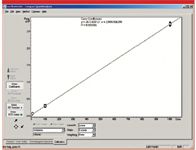
Figure 2 Calibration curve of MRM for melamine (1 â 1000 ppb).
MRM Results (Contaminated Infant Milk Powder)
Two contaminated infant milk powders from China were analysed by the method described. One sample was found to contain 17 ppm melamine, whilst the second sample contained 9 ppm melamine, both well over the recommended concentration for infant milk formula.
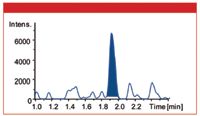
Figure 3 Melamine limit of detection is 0.05 ppb.
MRM Mass Spectrometer Parameters
MRM data for melamine was acquired using the UltraScan mode
with monoisotopic isolation to achieve high
selectivity. The acquisition software was configured for pseudo
MRM mode with the following settings:
Melamine:
Isolated mass: 127.1 Da
Isolation width: 0.6 Da
Amplitude: 0.6 V
Conclusions
It is demonstrated that melamine is conveniently detected at very low concentrations (0.05 ppb). Using the High Capacity Ion Trap Mass Spectrometer HCTultra, it is possible to detect and quantify melamine at concentrations relevant to food authorities in less than 5 min.
Bruker Daltonics Inc.
40 Manning Rd., Billerica, MA 01821
tel. (978)663-3660, fax (978)667-5993
Website: www.bdal.com
